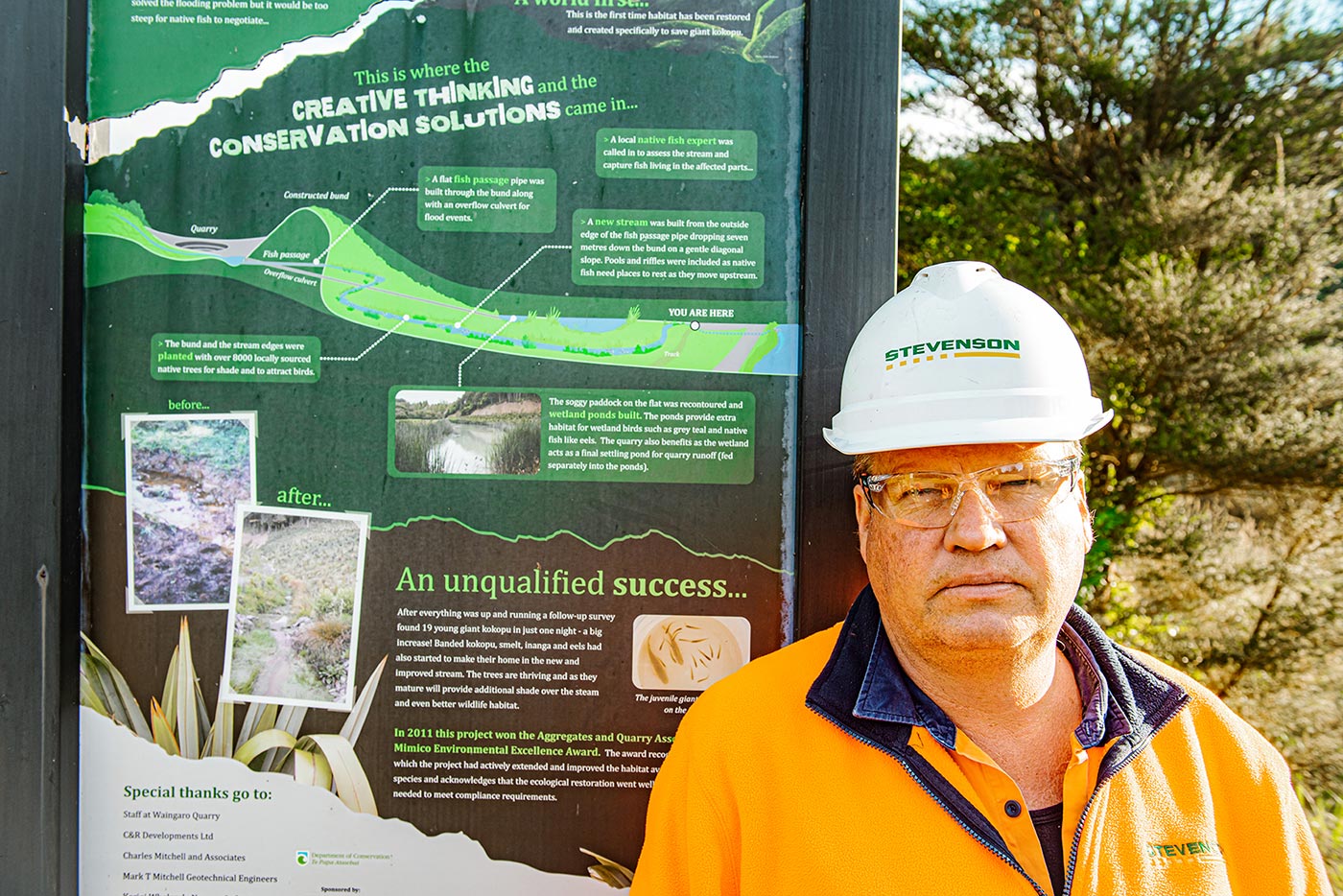Award winning restoration project surging with indigenous wildlife
Fifteen years ago a quarry extension prompted a restoration that not only created an award winning wetland environment for our indigenous species, but a legacy for future generations. We check in with the team at Waingaro Quarry and update on their progress.
A special place in the Waikato, the Hakarimata Range is one of a succession of ranges that form the western boundary of the Waikato Basin. Sandstone, siltstone and greywacke have strongly folded, faulted and been overlaid by other sedimentary rocks to form the range and adjacent land.
The range is dominated by lowland broadleaf and podocarp forest, and lies in a transition zone between northern kauri forest and southern beech forest. Here, indigenous plants and animals of all three forest types create a highly diverse zone which is also the largest remaining example of lowland forest that once dominated the Waikato Basin.
The 2009 Waingaro Quarry extension required removal of bush and modification of a high-value stream, an important habitat for native fish including giant kōkopu, eels and whitebait. To minimise the visual impact on the nearby Ngāruawahia township, a gully was to be filled, leaving a 35 metre high bund, 250 metres long by 250 metres wide. Wetlands were designed as a final water polishing pond for quarry runoff, allowing the site to stay within its discharge standards.
By all accounts, the exercise wasn’t a major engineering task. The team, however, had other ideas. “We wanted to take this site above and beyond the minimum rehabilitation requirements,” says Allan McDonald, Stevenson Waingaro Quarry Manager.
To provide a passage for the fish a 300mm culvert was installed. With an outlet 7 metres above the existing stream, the culvert design and installation was challenging and a series of rock pools and riffles were constructed.
As part of a wider enhancement project, the team planted 8,500 eco-sourced indigenous plants which are now well-established. They also implemented a programme to control pests including rats, possums and stoats. (It’s estimated that 70% of New Zealand’s indigenous birds and bats do not reach fledgling age due to predation by introduced animals.)
“Ten years on there’s been a resurgence in wildlife,” says Allan. “We’re seeing birds in much bigger numbers. Monitoring shows that Tui numbers have more than doubled”.
Quarry staff have monitored the fish life since the wetlands’ inception to ensure the culvert is not only providing an easy and accessible fish passage, but a very liveable habitat for the kōkopu and other fish species. The data is positive, showing an increase in both size and population of the native fish species who are travelling upstream.
Perhaps most encouraging however is the long-tailed bat, or pekapeka. In danger of extinction the quarry predator control program has seen the local population stabilise, with the pekapeka visiting the stream and wetlands at night to feed.
The team willingly share their knowledge and experience with others on a biodiversity journey, and local ecologist Gerry Kessels regularly shows the restoration to clients and stakeholders. “True off-set ecological restoration is not easy”, says Gerry. “It’s not just a matter of throwing money at the task. It requires expertise, practical experience, logistical organisation, monitoring, contingency planning and time, lots of time.”
“That is exactly the approach the team used during the forest, wetland and stream restoration process at Waingaro. The result is now plain to see, with key threatened fish species utilising the stream and the nationally critically endangered long-tailed bat still foraging and roosting in the area,” adds Gerry.

